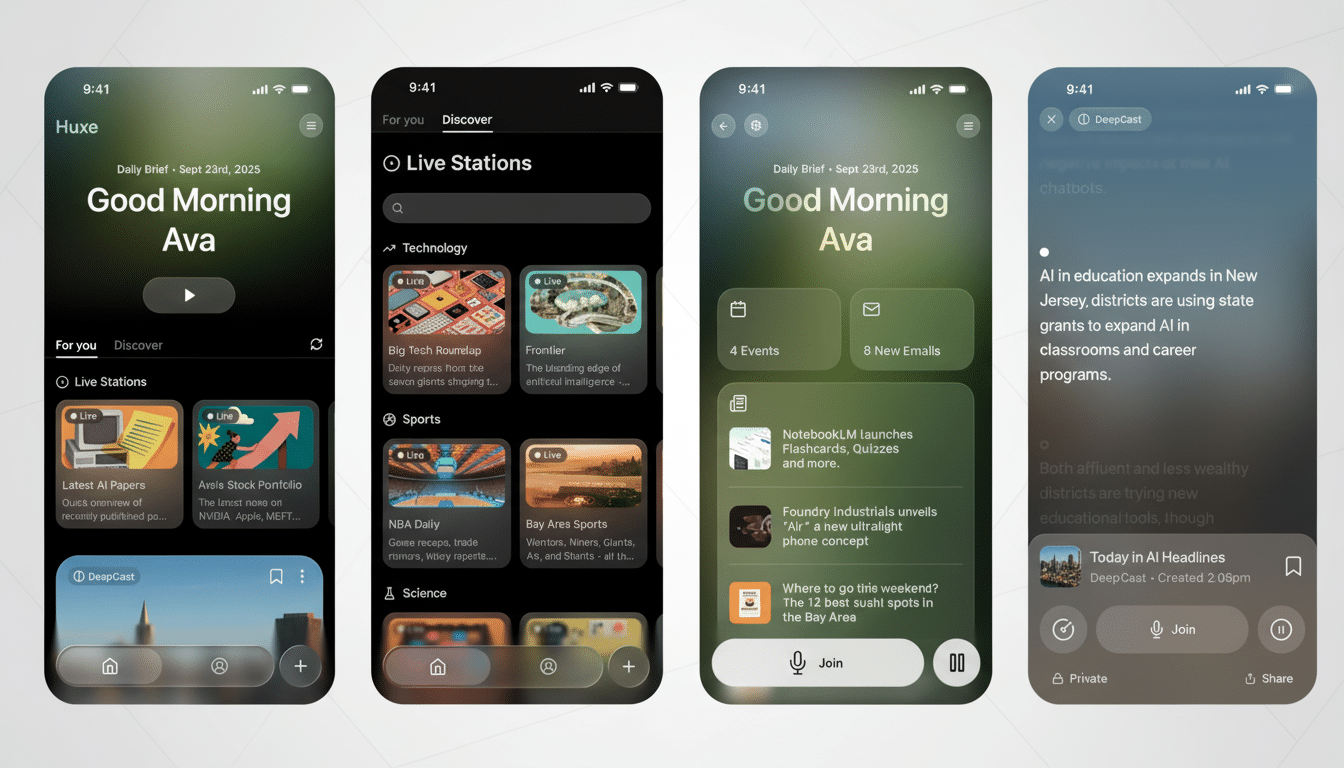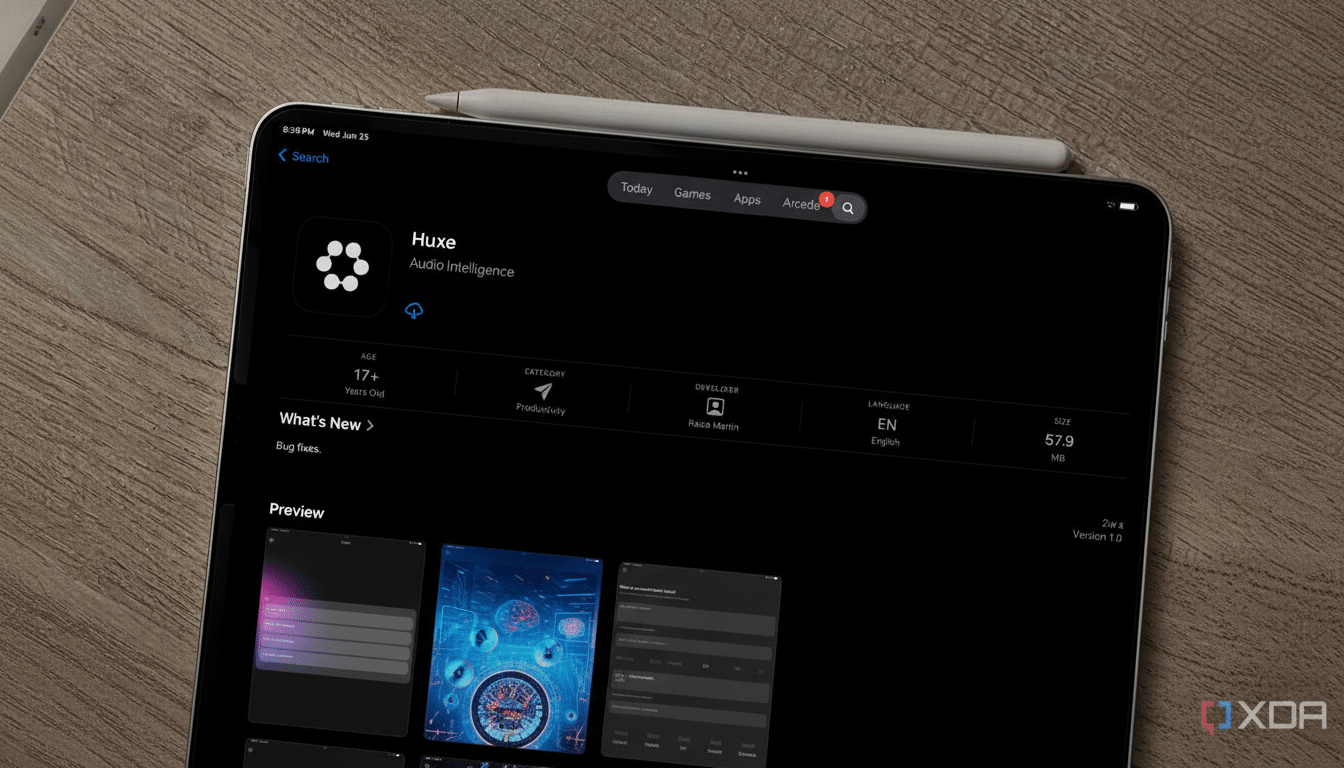Three of the co-founders of NotebookLM have come back together to release Huxe, an audio-first assistant that transforms your inbox, calendar and topics of interest into interactive briefings hosted by Artificial Intelligence.
With $4.6 million in backing from Conviction, Genius Ventures, Figma CEO Dylan Field, and Google Research’s chief scientist Jeff Dean, the app is designed to make catching up on news and research as easy as hitting play.
- What Huxe actually does and how its audio assistant works
- From NotebookLM to a wider audio canvas for Huxe
- Why audio is the wedge for news and research updates
- Competitive landscape and use cases for audio assistants
- Trust, transparency and what to watch with AI audio
- Bottom line on Huxe’s approach to AI audio briefings

Available for iOS and Android following an invite-only pilot, Huxe embraces a simple concept: that many of us don’t require another screen, we need time back. By creating podcast-like conversations that you can interrupt with questions, it holds out the possibility of hands-free parsing of dense information and staying current without doomscrolling.
What Huxe actually does and how its audio assistant works
Huxe pulls from your emails and calendar (with permission) to create a daily audio briefing of what’s important — meeting prep, follow-ups, critical updates. In addition to personal catch-up, you can dive into themes and let a series of AIs converse about them, switching between high-level summaries and deeper dives when you please. If something’s not clear, you call it out; the hosts clarify on the spot, rewording or elaborating as necessary.
One unique feature is “live stations,” always-on audio channels for aspects like tech policy, sports or entertainment. After you hear it the first time, Huxe follows the development and processes updates that come from a rotating set of sources in an attempt to keep up with developments as a story moves. There’s also a personalized interest feed in the app that lines up fresh audio catered to your habits, which sends out a wink to how people snack on podcasts during commutes and chores.
From NotebookLM to a wider audio canvas for Huxe
Co-founders Raiza Martin, Jason Spielman and Stephen Hughes developed some of what became the flagship trick for NotebookLM: translating documents into digestible summaries and AI “podcasts” for study and processing. Huxe capitalizes on that but changes the emphasis from static uploads to waves of information in the daily stream, with real-time updates and a quicker loop for Q&A.
The team first looked at chatbot ideas for business scenarios before honing in on consumer needs. The insight they’re pursuing is one already known to knowledge workers: a mountain of inputs splintered across tabs and apps. Huxe is betting that audio can condense that sprawl into a manageable stream, and that the agents in this case will act more like co-hosts than Clippy assistants.
Why audio is the wedge for news and research updates
Consumption of audio continues to rise, for something other than entertainment value. Edison Research’s Infinite Dial has tracked a broad expansion in podcast listening over the last several years, while the Reuters Institute has charted increased engagement with on‑the‑move audio content when it comes to news, especially among younger groups. This pivot benefits products that can provide context without requiring a screen — and that is the window Huxe wants to fill.

The underlying tech has matured rapidly. Good synthetic voices from startups like ElevenLabs and Oboe, combined with big language models, make multi‑speaker discussions sound more human. Big platforms have indicated similar aspirations; big companies are experimenting with AI‑narrated stories and chatbots. Huxe’s differentiator is the mix: personal signals, live topic stations and interruptible dialogue all in one place.
Competitive landscape and use cases for audio assistants
Huxe joins a crowded category of audio-powered tools. In entertainment, India’s Pocket FM and Kuku FM are using AI to scale narrations and original content. In productivity, you see more personal assistants introducing voice modes and read‑outs. Huxe isn’t aiming to be something you can rely on for everything so much as a concentrated layer for information intake — hands-free email triage, meeting prep while in motion, and topic following that isn’t reliant upon chasing updates.
Historically, early adopters for products like NotebookLM have been power users who keep dozens of tabs open and suffer from a backlog of reading. Huxe seems to be competing for that crowd, though with an accessible on‑ramp for anyone who likes listening more than reading long articles.
Trust, transparency and what to watch with AI audio
Audio summarization includes its own responsibilities. Users will want to understand how sentences are chosen for the account, when a claim is recycled as a paraphrase or taken verbatim, and whether and how that system flags uncertainty. The industry at large is heading in the direction of citation and provenance markers; judge Huxe on how well it makes sourcing visible, and on how gracefully it treats corrections as stories shift.
Privacy is another pressure point. A reading assistant for your email and calendar must have tight permissions, clear controls, and an open escape hatch. Many AI products today feature these kinds of granular data settings and deletion workflows; similar guardrails will become table stakes for Huxe as adoption expands.
Bottom line on Huxe’s approach to AI audio briefings
Huxe is not merely slapping a synthetic voice onto text; it is recasting how busy people absorb the flow of news and research. The app has some experienced builders — both from the NotebookLM team and among backers — and a product that feels native to how we already listen to audio, so it has a shot at finding its place in the world. So if it can nail sourcing and privacy without lag, Huxe could be the go‑to for turning information overload into something you might actually listen to.

